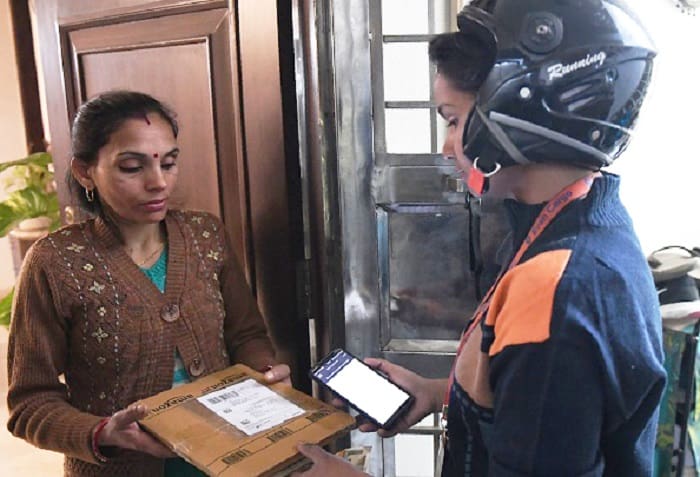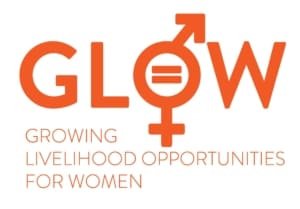The Logistics Industry

Industry Overview
- The industry has the potential to employ nearly 25 million workers by 2030[4]
- Logistics companies are currently facing a shortage of workers, and hence, aim to employ women to get access to a large pool of potential workers
- The roles are well-paying, with potential for flexible working hours
- Leverages women’s capabilities as more reliable, diligent workers[5] with better attention to detail
Interventions to increase women’s participation in dark store and warehouse operations
Warehouse operations refer to storage of physical goods for further distribution. Key roles in warehouses include pickers, packers, sorters, and data entry operators. Dark store operations refer to storage and fulfilment of online orders. Key roles in dark stores include picker and putter. As of 2024, warehouse and dark store operations employ approximately 470,000 workers, out of which only around 9% are women[6]. Hiring women in dark stores and warehouses can result in higher productivity, lower absenteeism, higher responsiveness, lower errors and improved work culture for logistics companies. To learn how you can increase the participation of women in your warehouse operations, click here >
Interventions to increase women’s participation in last-mile and hyperlocal delivery operations
Last-mile delivery operations refer to the final leg of an e-commerce delivery, where the parcel is delivered to the end consumer. Hyperlocal delivery operations refer to delivery from seller to the end consumer in the same or neighbouring locality within the city and on the same day. As of 2024, last-mile and hyperlocal delivery operations employ approximately 530,000 delivery agents and under-the-roof workers, around 12% of whom are women[7]. There is potential to create a large number of well-paying jobs with flexible hours.
To learn how you can increase the participation of women in your last-mile delivery operations, click here >
To learn how you can increase the participation of women in your hyperlocal delivery operations, click here>
Insights from GLOW’s longitudinal study to understand women’s journeys in warehousing and delivery roles
GLOW conducted a two-year longitudinal study with 26 women working in warehousing and delivery roles across 4 Indian cities. The study sheds light on women’s motivations to join these roles, and highlights both the opportunities and barriers they encounter. The following are the key takeaways from the study:
- Women often accessed warehousing roles primarily through friends or family, and delivery agent roles through a mix of social media and friends or family
- Women often cited prospect of better earnings and handling lighter parcels as reasons for applying to the warehousing role, while they cited flexible timings as a key reason for applying to delivery agent role
- Warehouse workers cited unfavourable leave policies and inadequate transportation support as major challenges, while delivery agents cited low earnings, difficult working conditions (e.g., riding in harsh weather), and safety risks as key problems faced
- Over the course of the study, 24 out of 26 women continued to work, 6 women saw an average salary increase of 30% with 2 women getting promoted
- Women left both warehousing and delivery jobs due to low earnings and physical strain. For warehouse workers, contract non-renewal and business closures were also key factors
Employers and ecosystem players can enable sustained participation and upward mobility in the workforce for women, by doing the following:
Employers can
- Tap into referrals and trusted community networks such as women self-help groups or women cooperatives to hire women for warehousing roles, and leverage social media to attract women for delivery agent roles
- During onboarding, inform workers about available leaves (e.g., sick leaves) and the application process. Further, publish this information on noticeboards
- Ensure delivery agents have access to hydration kits, protective gear such as raincoats, caps with neck flaps
- Geo tag rest locations (e.g., shaded hubs, public rest points) in the delivery agent app
- Share clear criteria and timelines for on-roll conversion or promotion opportunities for warehouse workers, to build stability and trust, and spotlight promotion stories to highlight available growth opportunities
Ecosystem players can
- Launch initiatives (e.g., multimedia campaigns, mandatory info-sessions by employers, community sessions by NGOs) to raise awareness about ESIC [8] benefits and to support with the claim process
- Improve and expand safe transportation options, especially in commercial belts in the outskirts (e.g., industrial parks, SEZs, logistics parks)
- Invest in technology solutions such as panic buttons or mobile apps for reporting safety-related incidents in real-time
GLOW's Logistics Partners





[1] PLFS 2023-24

